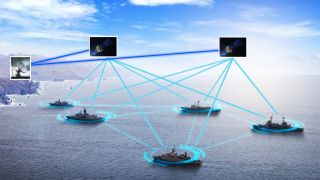High-performance control systems for on-board agility
A high-performance system that allows users to control the dynamics and concurrent use of all IP transmission systems while also taking into account the quality of service (QoS) on ships is not only highly relevant to today's naval vessels but is even more vital for those of the future.
The IP Management System from Rohde & Schwarz offers users the following:
- Full integration of all IP based transmission systems
- Allocation and assurance of an operational minimum data rate for each QoS class in a security domain
- Prioritization of communications services and adaptation of available communications resources to changing operational requirements and communications needs
- Simultaneous and dynamic use of IP connections for different communications services without delay in the controller
- Future-ready investment in the continually increasing and ever more extensive security and functional requirements for IP based transmission systems for communications
The German Navy successfully tested the prototype in May 2023, laying the foundation for future naval deployment scenarios.












